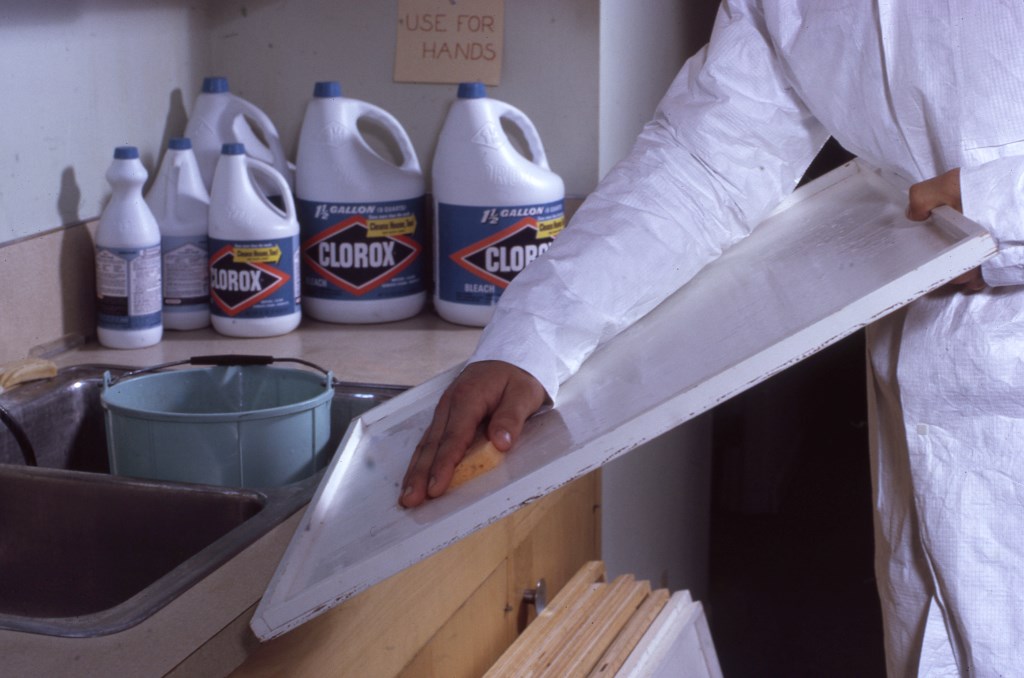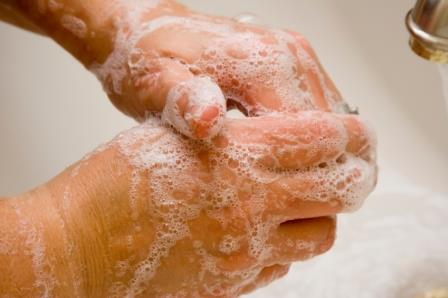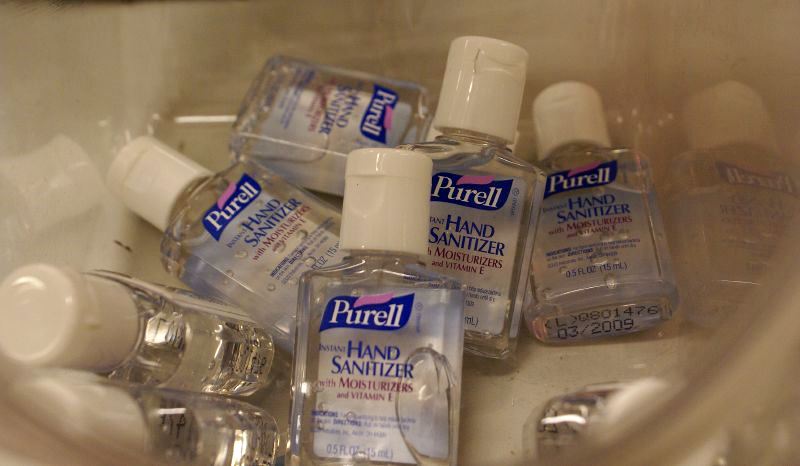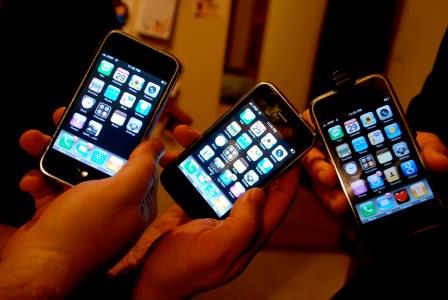Sanitize Hands, Home And Workplace. Here Are The Best Ways
 Now that the novel coronavirus (COVID-19) pandemic has become a reality, it’s essential to uphold high standards of hygiene. Minimize the transmission of infection: Stay in your house if you’re under the weather, sneeze or cough into a tissue (which you dispose of immediately), and sanitize your hands, your home, and your workplace.
Now that the novel coronavirus (COVID-19) pandemic has become a reality, it’s essential to uphold high standards of hygiene. Minimize the transmission of infection: Stay in your house if you’re under the weather, sneeze or cough into a tissue (which you dispose of immediately), and sanitize your hands, your home, and your workplace.
Hand sanitizer and bleach are two important tools for reducing the spread of disease. Find out how to use them effectively.
Sanitize Hands
Washing
- Washing your hands with soap and water, following the steps below, is actually a better way to sanitize than using a commercial hand sanitizer.
- Frequent, thorough hand washing is key, especially:
* before and after using the toilet
* after sneezing, coughing, and blowing your nose
* after touching hard surfaces such as doorknobs or railings in public places
* before and after touching your mouth, nose, or eyes (for example: eating, biting your nails, scratching your nose, putting on mascara, or rubbing your eyelids)
* after putting laundry into the washer or the dryer
- Use liquid soap as opposed to a bar, and scrub for 20 seconds. (Singing “Happy Birthday” twice is the recommended way of timing your washing, though when I tested it, I only got through 1¼ renditions in the specified time.) Lather up in between your fingers, around and under the nails, and all over the fronts and backs of your hands.
- Dry hands with a paper towel, not cloth, when you are away from home, to reduce the spread of infection. Make sure your hands are completely dry.
- Try to use a barrier such as disposable surgical gloves or even a tissue when touching potentially contaminated surfaces. Then discard the barrier.
Hand sanitizer
- Clean your hands with hand sanitizer when you don’t have the opportunity for a full wash.
- Choose sanitizer that's at least 60 percent alcohol. Use benzalkonium chloride if nothing else is available. Purse- or pocket-size bottles of hand sanitizer are likely in short supply in your area due to concern about the coronavirus, so consider buying a larger container and “decanting” it into a smaller, spill-resistant bottle. Or make your own with this DIY hand sanitizer recipe.
- I prefer individually wrapped wipes. They’re the most hygienic and easy to carry if you’re on the go – exactly when you most need fast, easy hand sanitization. You may have trouble finding the exact type you want, though. My local drugstore was sold out and my Amazon search kept resulting in the message “Currently unavailable. We don't know when or if this item will be back in stock.” So be flexible as to brand.
- Never ever reuse a sanitizing wipe – viruses can live on the damp surface.
Sanitize Your Home or Workplace
Disinfecting with Bleach -- Do’s and Don’ts
FACT: Coronavirus can survive on hard surfaces for a week or more. Liquid laundry bleach (sodium chlorite) is an excellent, easily obtainable, and cost-effective method of killing the virus. However, it must be handled with care, according to these dos and don’ts.
Bleach wipes can also be used.
DO protect yourself with waterproof gloves and wear old clothes when using bleach.
DO provide protective gear if you hire a cleaner who will be working with bleach.
DO clean with soap and water first, to remove surface dirt. Rinse well before spraying on bleach.
DON’T use bleach full strength. Dilute it with 9 parts water to 1 part bleach.
DON'T believe the caveat that bleach should be used only with cold water. Clorox recommends combining bleach with hot water for best results.
DO use paper towels or clean rags to apply the bleach, and safely dispose of them afterward.
DO leave bleach solution on surfaces at least 10 minutes for full disinfecting action. (surfaces should be visibly wet.) Then rinse and dry.
DON’T store diluted bleach in a sunny place or for longer than 24 hours; it will lose its effectiveness.
DO be especially careful cleaning toilets, as coronavirus can be spread via contaminated feces.
DON’T overdo it. Your home and most workplaces will not need to be disinfected more than 1-3 times a day, unless you’re employed in a hospital or similar facility.
Most crucially, DON’T mix bleach with ammonia (found in Windex ™, among other cleaning products) or acid (such as vinegar or lemon juice). Both these mixtures are highly toxic.
Sanitizing Your Phone
- Scaremongering internet articles warn that your cell phone is covered in germs. However, as long as they are your own germs, you have nothing to worry about.
- Disinfect your phone only if you use it outside. Don't let other people handle it.
- Sanitize with a mild alcohol solution. Don’t spray or pour it directly onto your phone. Instead, apply to a microfiber cloth and use that to dab the mixture onto your phone.
- Avoid using household cleaning wipes for your phone; they’re too harsh.
Caring for a Coronavirus Patient at Home
You can care for a household member with a mild case of COVID-19 at home, but take these precautions:
- Clean hands as above after contact with the patient.
- If face masks are not available in your area, you can make your own masks. Discard or disinfect masks frequently.
- Wash patient’s bedding and pajamas, plus any reusable face masks, in hot water with bleach. Use a laundry basket to take soiled items to the washing machine – do not hold them against your body. Disinfect the washer afterward.
- Use disposable dishes for someone with COVID-19.
- The patient should stay in one room and use a separate bathroom, if at all possible.
IMPORTANT: This article was physician-reviewed for accuracy. For specific health advice, consult your personal MD.
Laura Firszt writes for networx.com.
Looking for a Pro? Call us (866) 441-6648







